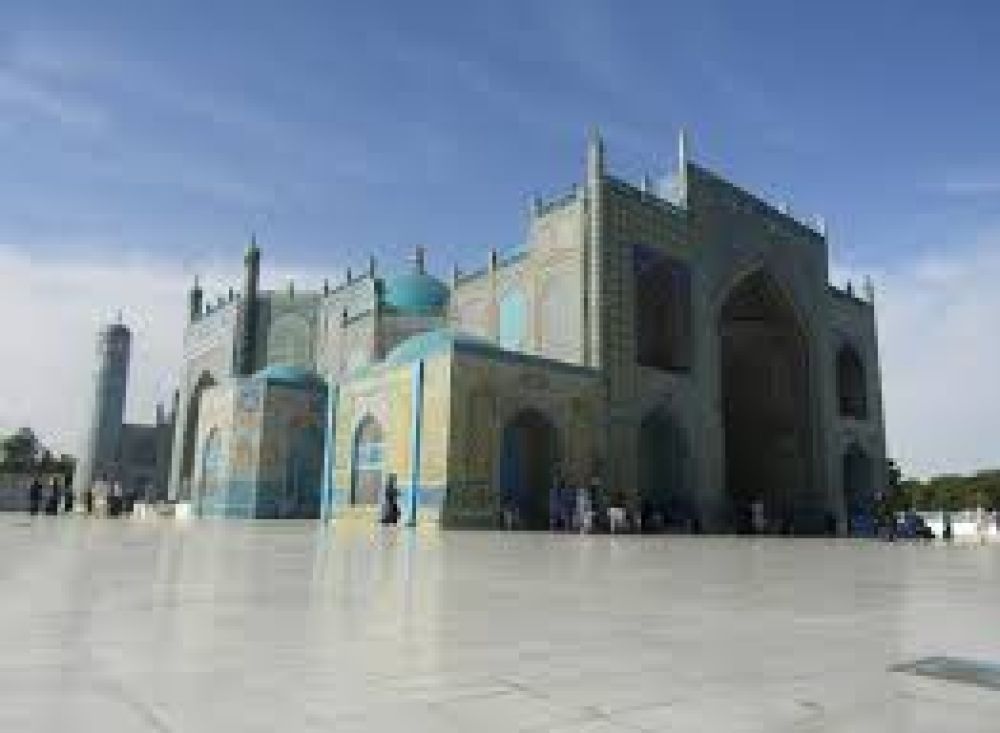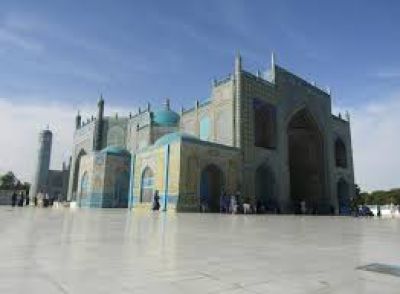

The Blue Mosque, also known as the Shrine of Hazrat Ali, is an iconic symbol of Mazar-i-Sharif and a monument of great historical and religious significance. It is said to hold the tomb of Ali ibn Abi Talib, cousin, and son-in-law of the Islamic prophet Mohammed. For more than a millennium, pilgrims from all over the Islamic world have come to pay their respects. The mosque's stunning blue tiles shimmer in the sunlight, presenting a mesmerizing sight. As you explore the spacious courtyards, observe the intricate Islamic calligraphy and tile work that adorn its walls and domes. Experience the ambiance filled with the scent of incense and the sound of prayers. Don't miss the chance to interact with the local worshipers and learn about their culture and traditions. You should allocate at least 2 to 3 hours to fully appreciate the Blue Mosque's beauty and spirituality.
Every year, the city of Mazar-i-Sharif hosts a traditional festival to celebrate the beginning of spring known as the Flower Festival or Gul-e-Surkh Festival. This event usually takes place in March or April, coinciding with the Persian New Year, Nowruz. The highlight of the festival is the blooming of the red tulips that cover the grounds surrounding the Blue Mosque. The entire city bursts into life with music, dancing, and poetry readings. It's an excellent opportunity to sample local cuisine and purchase handicrafts from the bustling bazaars that pop up especially for the occasion. Distinctly, it's a time when the local community comes together to welcome the new year, and visitors can expect an incredibly warm reception from the locals. Tourists should set aside a full day to indulge in the festivities and immerse themselves in the cultural heritage of Mazar-i-Sharif.
A short drive from Mazar-i-Sharif will take you to the ancient city of Balkh, once known as Bactra and considered by some as the 'Mother of Cities'. Balkh boasts a history that stretches back over 2,500 years and has been a center of trade, learning, and conquest. Visitors can spend a day exploring the remnants of this historical area, which include the walls of the city, the ruins of the Bala Hissar fortress, and a number of ancient mosques and madrasas. Notable is the Shrine of Khoja Abu Nasr Parsa, which is a fine example of Timurid architectural splendor. Although many of the structures are not in their original state, they evoke a profound sense of history. Visiting Balkh offers a rare glimpse into the region's deep-rooted past. To do justice to the site's rich heritage, allocate at least half a day for exploration.
Ghazni, with its famous minarets, once stood as a vibrant and sophisticated center of Islamic culture and the arts. These towering structures are remnants of the Ghaznavid Empire, which ruled in the 10th and 11th centuries. While much of Ghazni's ancient glory has been lost to time and war, the Minarets still stand as proud symbols of a bygone era. As you tour the site, you can see intricate stucco work and Kufic inscriptions wrapping the minarets, offering insights into the architectural prowess of the Ghaznavids. The minarets are located near various other ruins and archaeological sites, revealing layers of the city's history. Visiting the Minarets of Ghazni is typically a day trip from Mazar-i-Sharif and presents an opportunity to connect with Afghanistan's storied past. Be sure to plan for around 3 hours to fully explore the site and its surroundings.
No visit to Mazar-i-Sharif is complete without wandering through the vibrant bazaars that the city is known for. The bazaars offer a sensory overload with scents of exotic spices, the bustling sounds of commerce, and the vivid colors of rugs, textiles, and regional handicrafts. This marketplace is a fantastic place to observe the daily life of locals, interact with artisans, and shop for unique souvenirs. You can find everything from hand-made carpets, which the region is famed for, to traditional clothing, jewelry, and local delicacies. The bazaar is not just a shopping destination; it's a cultural experience. Haggling is expected, so be prepared to negotiate prices while you enjoy the lively atmosphere. Give yourself at least 2 hours to peruse the bazaar's offerings and immerse yourself in the local economic scene.
